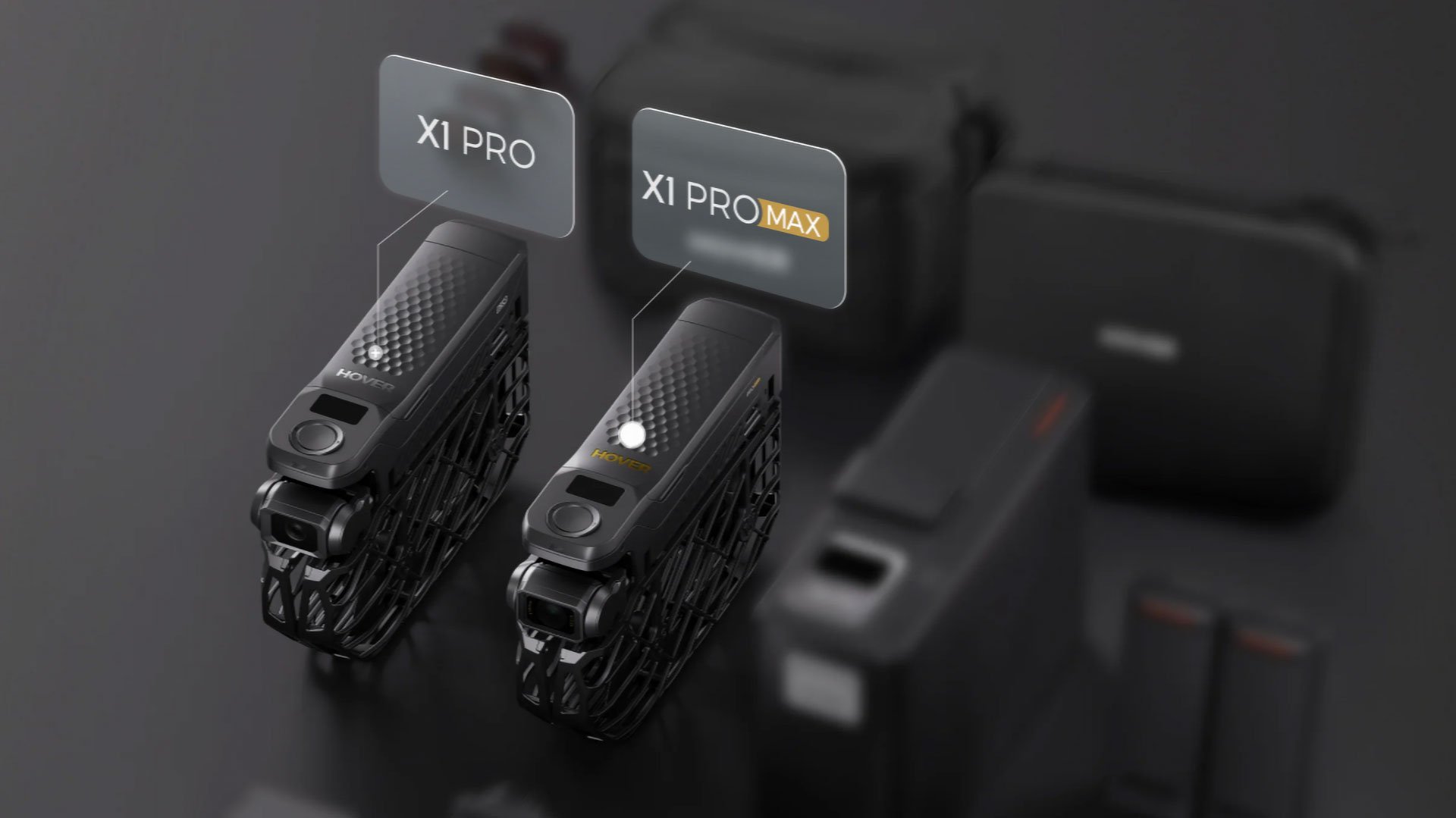

The HoverAir X1 (buy here) is a unique device amongst drones. It satisfies the <250g rules in place in much of the world but you don’t fly it like a traditional drone. Instead, it’s essentially a flying selfie camera. I have the original HoverAir X1 and it’s extremely handy, but its resolution was only 2.7K.
Well, now that changes with the launch (sort of) of the HoverAir X1 Pro, offering 4K video up to 60fps and 1080p up to 120fps. There’s also the HoverAir X1 Pro Max which bumps that up even further to 8K at 30fps or 4K at up to 120fps (or 60p HDR).
HoverAir X1 Pro
The HoverAir X1 Pro offers some nice advantages over the original HoverAir X1. Of course, the big one is the resolution. It’s not only able to now shoot at 4K resolution but it can do it at up to 60 frames per second. The patient ones amongst you can also shoot 1080p up to 120fps for some slow motion action for upscaling in Topaz Labs Video AI.
It has a larger 1/2″ CMOS sensor with a field of view equivalent to 17mm on full-frame. It’s seen a speed increase, with automatic follow speeds up to 42km/h (26.1mph) – plenty enough for things like jogging, sprinting or even cycling.
One of the original HoverAir X1’s other major disadvantages is that it doesn’t work over water. This was a big complaint from the many kayakers who wanted to use it to document their journeys. Well, good news! The HoverAir X1 Pro can now fly over water, snow, and off cliffs without dropping out of the sky.
HoverAir X1 Pro Max
The HoverAir X1 Pro Max bumps things up even higher. It sees a massive 8K resolution bump at 30fps, thanks to its 1/1.3″ CMOS sensor. Its lens offers a field of view equivalent to a slightly wider 16mm lens on full-frame. Of course, it shoots 4K, too, but it does it at up to 120fps.
You can also shoot 4K HDR at 60fps, with 10-bit HLG format footage. This provides a lot of leeway in post for correcting the footage. It’s not quite raw footage, but it contains enough detail and colour information to correct many issues without destroying your footage – at least in theory.
Like the X1 Pro, the X1 Pro Max has rear and side collision sensors – something the original HoverAir X1 does not have. It says “Maximum Altitude: 5500m”, but presumably, this is a takeoff altitude, and they’re not suggesting that it’ll fly 5.5km straight up from sea level.
Both drones appear to claim 16 minutes of flight time on a battery. I expect this may increase or decrease depending on the resolution, frame rate, bit depth and other settings used. We’ve seen this before in action cameras. The Insta360 Ace Pro ($399.99) battery, for example, lasts longer when shooting 4K than it does 8K.
Price and release date still unknown
The folks at HoverAir seem to be doing some kind of staggered announcement thing at the moment. The X1 Pro was unveiled, and then a few hours later, the X1 Pro Max was unveiled. And judging from the image at the top of this article, with several items still blurred out, it won’t be the last.
Currently, neither pricing nor availability information is available for either drone. Whether we’ll hear prices and availability at the end of all the announcements or if this is just a hype-building launch and we’re several weeks or months away from getting one is unknown.
The original Hover Camera, released in 2016, was an extremely promising device. In fact, considering the state of drone tech in 2018, it was a very unique concept. A concept, perhaps, that other drone companies thought was too niche to dive into.
The concept proved successful (eventually), and the HoverAir X1 was launched last year. I have one myself and it made it onto our gift guide of the best new cameras in 2023. It goes with me pretty much everywhere, even if I don’t expect to use it, just in case.
It has its quirks, and its 2.7K resolution isn’t ideal when almost every other camera I own shoots at least 4K, but what it allows you to capture can’t be matched when it works as intended. Bumping this up to 4K and 8K resolution might just give the company the mainstream breakthrough it needs.
But as to when we’ll see it remains to be seen. For now, we’ll just have to keep an eye on the HoverAir website. If they work even half as well as the original, though, these will definitely be popular cameras.






